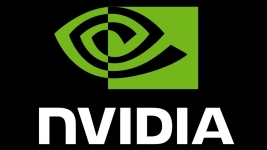Created in 1954, the Brno Observatory / Planetarium in the Czech Republic, one of the largest in Europe, was completely rebuilt in the last few years to make a multi-visual center, combining science, education and art.
The complex, which opened in November 2011, includes a new observatory with telescopes, a large planetarium with a dome 18 meters in diameter, capable of projecting about 9,000 stars, twenty nebulae, star clusters and many bodies in the solar system. It also includes a smaller, more intimate planetarium with a dome of 8m in diameter. The site now has a dozen employees and receives more than 100,000 visitors per year.
A hybrid solution combining optics and digital
During the design phase of the new planetarium in 2005, management of the site had already registered in its specifications to have a numerical simulation of the dome without sacrificing the quality of the optical projection. Since the early part of the last decade, the 100% digital projections have offered a quality, starry sky experience desired by purists. In order to achieve the global perspective of the starry sky synchronized to a digital simulator for other media, a hybrid solution was required. To find the solution that best matched its specifications, the management of the site issued a call for tender to several specialized companies and the proposed RSA Cosmos solution was chosen in late December 2012. Founded in 1985 and based near St. Etienne in France, RSA Cosmos is one of the world’s leading providers of integrated optical solutions, digital 3D domes, hybrids and laptops for planetariums. The company has already installed 150 planetariums worldwide, including 50 large facilities (domes measuring over 8 meters in diameter). Damien Pelisse, CTO of RSA Cosmos said “Among the main selection criteria which tipped the scales in our favor included our high resolution projection systems, the feature-rich digital simulator, and the ability of an untrained operator to use the system with ease.”
Eight graphics cards – PNY Nvidia Quadro K5000
The solution developed by RSA Cosmos is based on a hybrid system combining an optical simulator and a digital simulator. The projection is performed by two projectors JVC SH-7 with a resolution of 4096 x 2400. For the digital part, the image is divided into four equal parts. Each part is generated by a PNY Nvidia Quadro K5000 graphics card installed in a PC, coupled with a PNY Quadro Sync card. Four Quadro Sync cards are interconnected to ensure perfect synchronization of the four parts of the projected image. The entire solution was installed in September 2013, in advance of the the public opening, which took place in November 2013.
Immersive simulations
The power of PNY’s professional graphics cards allows for real immersive simulations with startlingly realistic images. Spectators leave the Earth and travel through space and past planets as if they were in the cockpit of a spaceship. The system can go back in time, to perform simulations and even to visualize the motion of comets. In addition, calculations are carried out at the card processor level (GPU) and not at the CPU of the PC, so the image generation takes place almost in real time, with an imperceptible delay for the viewer.
A fluid display for enhanced realism
Equipped with 4 GB of DDR5 memory, these cards are capable of storing digital terrain models, for example, the overview of the planetary surface, with a very fine texture and fluid display for heightened realism. PNY’s Quadro cards are able to manage high amplitudes with great precision, the size of objects, from the infinitely small to the infinitely large, are rendered perfectly.
Excellent functional richness The real-time 3D software developed by RSA Cosmos, designed with researchers in astronomy projection, offers rich functionality, including terrestrial simulations. It marries perfectly with PNY graphics cards. Thanks to the support and responsiveness of PNY, RSA Cosmos has successfully installed more than a dozen of these systems worldwide. In addition, the sustainability of PNY’s professional NVIDIA Quadro graphics cards provides RSA Cosmos with technological stability, allowing for development into the future.
More around this topic...
© HPC Today 2024 - All rights reserved.
Thank you for reading HPC Today.





























